The CTLT (Cadet Troop Leader Training) program was one of the
projects I was assigned to monitor. Its purpose was to expose
cadets during their 2nd or 3rd year
summer, to life as a LT in the army. My role was to assign them
positions in the Regt. and insure they had a challenging
experience. Col Saint was a West Point grad, he realized this
program could really pay benefits and took it very seriously.
Having been through the CTLT Program myself, as a cadet a few
years earlier, I felt we knew what to look for and delivered a
worthwhile and memorable experience.
All of the cadets participating in the training program
arrived together by air at Rhine Main Airport. The program was
only open to the Military Academy in the 1970s, however, some
years later, ROTC cadets were also given this important pre
commissioning opportunity.
At Frankfurt, the cadets were met by their unit sponsors and
driven to their posts throughout Germany in POVs, staff cars and
jeeps. The Blackhorse, on the other hand, flew our cadets back
to Fulda NOE (nap of the Earth) courtesy of the Air Cav Troop.
Being in S-3 and helping develop training schedules for the Air
Cav made this possible. I think all the cadets initially started
in Fulda with the 1st squadron and then, as
opportunity allowed, were assigned to 3rd and 2nd
squadron as well. The cadets had a great experience conducting
border surveillance, learning the tricks of maintaining a M551,
being exposed to the professional NCOs and most importantly,
learning about the real Army through day to day experience.
I left the Army in 1977. I married my wife Linda (English) in
12/77 who I met working in the Pro Shop at the Bad Kissingen
Golf Club in 6/76. That is a great story itself I’ll have to
share at another time. We have 2 wonderful children Nicole 24
and Matt 22. Nicole works as a corporate sales rep in wine sales
and Matt is a senior at Cal Poly in San Luis Obispo, CA. After
22 years with Procter and Gamble working in 4 locations, 5 years
ago I accepted an offer I couldn’t refuse to what has turned out
to be a great job in an interesting business. I am currently the
VP Supply Chain and a corporate officer for the E&J Gallo
winery.
Jim Jogerst
It has been a long time since the summer of 1976, but I
remember that it was a busy time. After the seniors graduated,
about 150 of my classmates and I spent three weeks doing
calisthenics before going to Airborne School at Fort Benning,
Georgia. Ground week, Tower week and Jump week were rigorous,
but the excitement of those five jumps was worth the strain.
Then it was off to Frankfurt, Germany for a month with a line
unit, the 11th ACR, through the CTLT Program.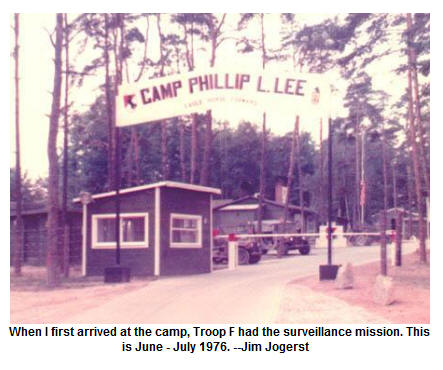
As I recall, everyone started off in Fulda, I was assigned to
Charlie Troop. Quarters were in a nearby hotel, so I had a short
walk to Post each morning. The days were spent in the motor pool
inspecting and requisitioning parts, trying to understand how
the real Army worked and otherwise learning as much as I could.
On a few days, we knocked off early and played softball.
After two weeks, we packed up and moved to Camp Lee for
border patrol duty. My platoon conducted daylight orienteering,
using the well defined tree lines and road net as landmarks. The
West German people we encountered were friendly and helpful.
Shortly after arrival, we conducted a ~15 clicks patrol
overnight, getting ambushed by our sister platoon while crossing
a clearing; flash-bang grenades at night will make you jump! We
returned the favor the following night by conducting a raid on
their position and we “won” by getting into their perimeter
undetected. I think using one of the searchlights on our M551 as
a distraction, and having it blind their night vision helped.
One morning was spent on a joint border patrol with two West
German troops. My job was to radio our position back to Camp Lee
using the CEOI “I set - I shack” to encode each coordinate. The
position was plotted on map boards and on review later it was
apparent we were rarely far from the international border’s blue
and white stakes. At one site where the border trace took a jog,
I had to encode several times as base personnel plotted our
position inside East Germany. Maybe I missed a map coordinate or
part of the code key since the landmarks were very clear along
the border. This was a situation today’s digital GPS would
certainly avoid! I guess small mistakes were tolerated at the
border camp, I am sure they knew the West Germans wouldn’t stray
across the border.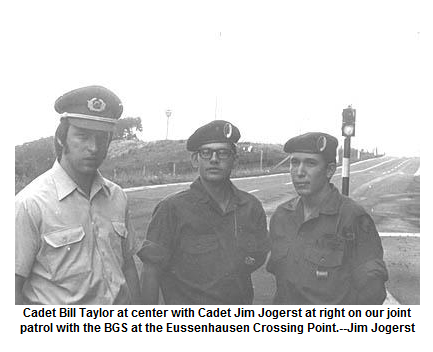
I enjoyed my short tour with the Blackhorse Regiment and then
the Eaglehorse Squadron. In particular, with Troop E, I really
learned just how large and complicated a cavalry troop was and
how the entire chain of command had to work together to best
utilize the day. The dedication of 11th ACR troops and resolve
of the officers to continuously get better has long stayed with
me.
My class at the Military Academy was the first one that
allowed cadets to select from all branches of service and I
choose Ordnance because this seemed the best match for my
interests in mechanical engineering and materials. After
commissioning, I was stationed at Fort Hood and was part of the
Direct Support Company assisting the initial fielding of the M1
tank. This was also a great experience and once my active duty
obligation was completed, I moved on to the private sector and a
career in engineering.
Fahnenjunker am Manteuffel Kaserne
What was the experience with officer cadets of the three
German Army units assigned to Manteuffel Kaserne during the
years of the Third Reich? Kradschutzen Battalion 2, Kradschutzen
Battalion 7 and the 13th Medical Replacement Training Battalion
records are long lost or hopelessly scattered to find an
accurate answer but two sources allow us to fill in at least a
part of the story. By looking at the officer accession system of
the Wehrmacht Heer and the brief “201” file of a cadet then
lieutenant and company commander in 2 Krad named Prince Wilhelm
von Hessen, we can accurately speculate about the experiences of
those soldiers who aspired to become German officers when the
Kaserne on the hill was still new.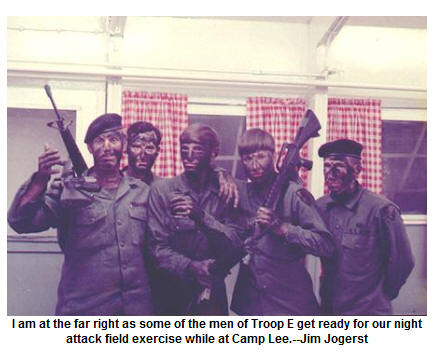
By Skill and Merit
The German Army of the Third Reich, while adopting the
trappings and much of the rhetoric of the Nazi movement,
nevertheless was strongly rooted in traditions dating back to
the unification of Germany under Bismarck and the Prussian
professional military model. Germany never established a
national army academy in the model of Sandhurst, England,
L‘Ecole Speciale Militaire de Saint Cyr, France or West Point
but there were a number of private or partially state supported
“cadet training schools” dating from the 19th century
that exposed the youth of the German aristocracy and rising
middle class to the specific study of military tactics,
organization and discipline.
Graduates of these schools, as well as other young men
without cadet experience but with some level of education and
life experience indicating a possible successful outcome, could
then enter the army as an “Officer Aspirant” or Anwarter and
begin a probationary period on active duty. The program lasted
approximately two years and consisted of assignment to a line
unit and training at the junior enlisted, then mid and senior
grade NCO levels. These men soldiered with their unit, received
specialized training monitored at the division level, attended
branch specific training courses at centralized locations and
were field and academically tested to either “wash out” or
progress to each successive aspirant level. This insured that
the unit invested heavily in the training of its officers; in a
very literal sense, the cadet they trained was the junior
officer they received.
At the lower level of the progression, the individual held
the rank of Fahnenjunker - Gefreiter, or Fahenjunker -
Unteroffizier. Continuing through the training and vetting
process, at the higher level, the aspirant was known as a
Fanrich and Oberfanrich. This system easily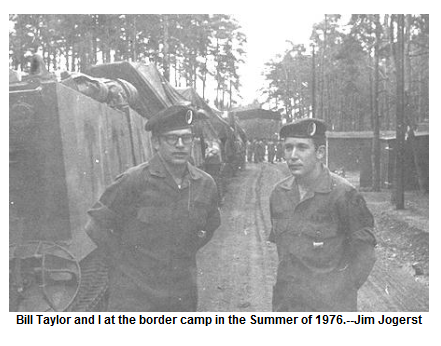 would have been
recognized by a German officer from 1914 or 1890. Rather than
special rank markers, these men wore combinations of junior
enlisted and NCO insignia at the lower level and NCO and officer
insignia at the higher level to literally show that they were in
a carefully monitored evolution.
would have been
recognized by a German officer from 1914 or 1890. Rather than
special rank markers, these men wore combinations of junior
enlisted and NCO insignia at the lower level and NCO and officer
insignia at the higher level to literally show that they were in
a carefully monitored evolution.
During the pre war years, as Heinz Guderian was building the
2nd Panzer Division, he selected the newly promoted
Major Hasso von Mantueffel from the staff of the 2 Krad, to run
the aspiring officer training program for the division. There
probably were several aspirants in K2 and its higher command of
2nd Schutzen Regiment; one brief record that has
surfaced belongs to a member of the former German aristocracy,
cadet then reserve officer Prince Wilhelm von Hessen.
Von Hessen, a minor member of a German royal family from
Fulda, was highly connected to the old guard of Germany. He was
the son in law of the only daughter of the former German Kaiser.
The end of World War 1, however, signaled the end of political
power for the German aristocracy. Families retained their
titles, land holdings and some status in society but the gilded
age had passed. Von Hessen entered the Army as an aspirant
officer in the reserves in 1935 with the 2 Krad in Eisenach. His
title of Prince may have impressed some, but progression through
the pre commissioning program was based soley on merit and
achievement.
Von Hessen’s record does not specify the exact dates of
advancement, however, as the unit moved to Bad Kissingen and
then Eisenstadt, his career clearly progressed. Perhaps at
Manteuffel Kaserne or in Austria, he successfully passed his
final examination and probationary period as a lieutenant and
received his commission as a lieutenant in the reserve army with
active duty status. Upon formal commissioning, he already would
have been a proven platoon leader.
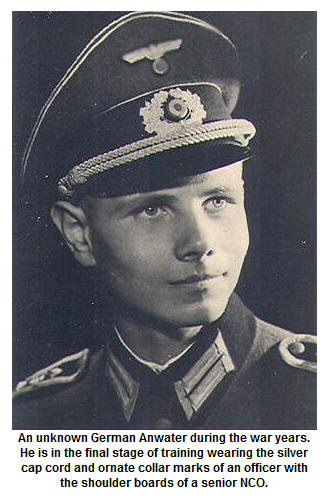 Once the war began, still as a platoon leader, he was wounded
in Poland and again in France. In 1941, with the campaign in
Greece, he was a company commander with K2 and the following
year, moved to a staff position with the higher command 2nd
Schutzen Regiment. Then, some months later, he took command of
the regimental headquarters company. Continuing as a first
lieutenant, as the war in Russia began and the 2nd
Panzer Division was committed, he took command of Rifle Company
7 in the mechanized brigade and, the same week that his
promotion to captain was approved, was killed in action in
April, 1942.
Once the war began, still as a platoon leader, he was wounded
in Poland and again in France. In 1941, with the campaign in
Greece, he was a company commander with K2 and the following
year, moved to a staff position with the higher command 2nd
Schutzen Regiment. Then, some months later, he took command of
the regimental headquarters company. Continuing as a first
lieutenant, as the war in Russia began and the 2nd
Panzer Division was committed, he took command of Rifle Company
7 in the mechanized brigade and, the same week that his
promotion to captain was approved, was killed in action in
April, 1942.
We have yet to uncover a similar record of a cadet to officer
progression within Kradschutzen Battalion 7, part of the 7th
Panzer Division, that occupied Manteuffel Kaserne in the mid
1938 through late 1939 period. It seems safe to say, however,
that many of the lieutenants of this unit began in the cadet -
Offizier Anwater program of the 2 Leichte Division in the late
1930s.
In 1940, the 13th Medical Training Replacement
company was expanded to a training battalion and moved to Bad
Kissingen with the requirement of providing basic and field
medic training to select draftees of Wehrkreis (military
district) XIII in Bavaria. The officer staff would have been
small, the only existing roster, from late 1943, does not
indicate any Anwater present. This is not to say, however, that
no aspirants were ever with the unit, just that that record is
not clear.
Also in 1940, the officer accession program changed in light
of heavy demands to fully staff reserve units and replace
casualties. The first significant change to the cadet training
program was that the Anwater period was somewhat decreased in
length and combat units were relieved of most of their formal
training responsibilities. In the prewar years, units had
significant requirements for training personnel at all levels.
In combat, this was clearly impractical. In Germany, at the
former barracks sites, training facilities were established to
train both military skills and to fully support NCO and junior
officer training. Still, a part of the program saw probationary
NCOs and men in the Anwater program perform a part of their
training at the front.
The second major change to the accession program was that
combat proven NCOs, long the backbone of small unit success in
the Heer, were allowed entry into the officer aspirant programs.
Following completion of the abbreviated Anwater program they
could easily rise through the company and field grade officer
levels based on demonstrated leadership and ongoing combat
success.